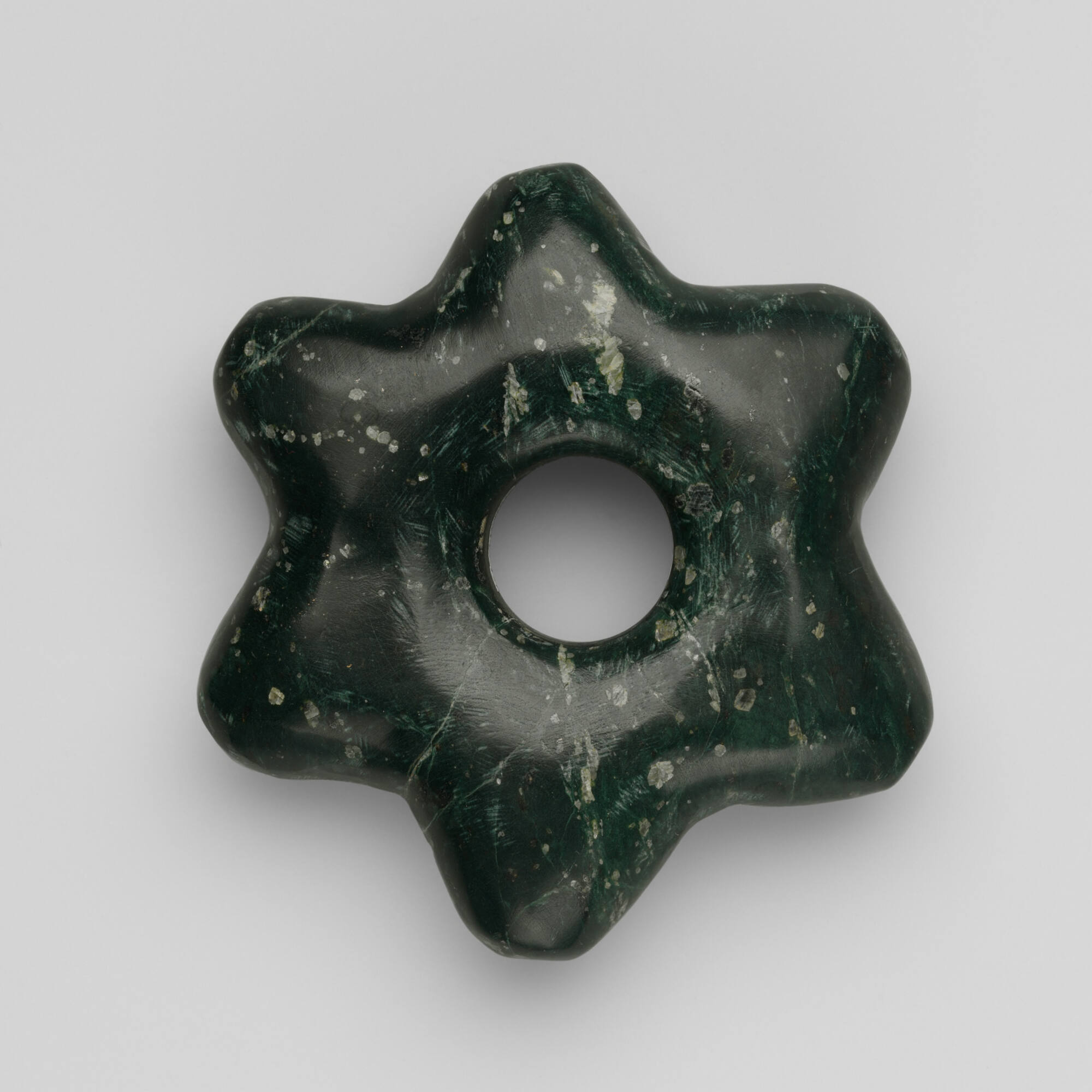
Object Details
Culture
Chimborazo (Ecuador)
Date
AD 1400-1550
Medium
Jadeite green stone
Dimensions
4 1/8 × 1 inches (10.5 × 2.5 cm)
Credit Line
Gift of Thomas Carroll, PhD 1951
Object
Number
2006.070.376
BRIEF DESCRIPTIONThis is a mace head carved from a piece of jadeite stone.WHERE WAS IT MADE?Although(…)
BRIEF DESCRIPTIONThis is a mace head carved from a piece of jadeite stone.WHERE WAS IT MADE?Although the Inca Empire’s capital was in Cusco, Peru, at one time it encompassed an area that included parts of what are now Ecuador and Chile. This mace head was made in what is now Ecuador. The attribution to Provincial Inca means that it is a local (but not Incan) manifestation of the Inca style.HOW WAS IT MADE?Hand tools made from harder stones, as well as sinew or threads made of fiber or bronze, were used to shape the stone into this form. To ease the work, sand was used as an abrasive, and water as a lubricant.HOW WAS IT USED?Although the weight of this stone would have made it an effective weapon when swung with force at an opponent, its careful construction from highly valued greenstone/jadeite may indicate that this item served a ceremonial purpose. The central hole would have enabled it to be hafted to a handle.WHY DOES IT LOOK LIKE THIS?The form of this mace head could be explained by its practical purpose—when wielded at an opponent, it could deliver an equally damaging blow from any angle.ABOUT THE INCA CULTURE:The Incas (or Inkas) were a Quechua-speaking highland people whose capital was located at the city of Cusco, Peru. By the time of the Spanish Conquest in 1532, the Inca Empire, Tawantinsuyu, stretched from the border of Ecuador and Colombia to the Maule River in Chile. The Incas had an elaborate road system which enabled them to move people, goods, and information, and which extended throughout their empire. Conquered groups were often moved to minimize any possibility of uprisings against the Inca overlords; this also served to spread the Inca language and artistic styles throughout the region.












